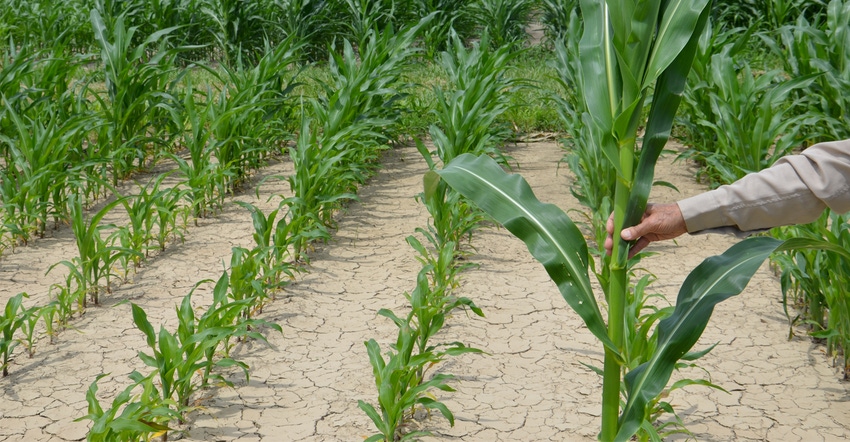
The picture above can’t talk, but it clearly tells the story of the 2017 growing season to date in the eastern Corn Belt. The only staged part of the picture is that the stalk Dave Nanda is holding was brought out of the taller corn in the background as a stark comparison to the very small corn in the foreground. Everything else in the photo is 100% authentic.
Nanda is an independent crops agronomist. Corn Watch ’17 is sponsored by Seed Genetics-Direct, Washington Court House, Ohio.
Here are three observations from the picture that help tell the story of this season.
• Corn planted April 20 that emerged on time looked good by midsummer. The tall corn in the back of the photo, just across a grassy lane that runs through the middle of the field, was planted April 20 after a stretch of dry, warm weather that persisted at this location for about 10 days. It began raining in the afternoon after this corn was planted.
“It rained several inches over the next several days,” Nanda observes. “It also turned unseasonably cool. Weathermen had predicted rain, but no one could have anticipated how much it would rain.”
As a result, corn in wetter areas of the field was slow to emerge. The grower considered tearing up the entire stand but opted to spot-in corn instead.
“Looking at it now, I believe he certainly made the right decision not to tear it up,” Nanda says. “When the picture was taken, this corn was at the 10th to 11th leaf stage, and probably less than 10 days from pollinating.”
• Corn replanted the first time is several growth stages behind. Notice the corn in the middle of the picture, just in front of the grassy lane. The grower did replant a very small wet spot on this side of the lane. The corn just above knee-high is from the first replant.
Where water stood after the first planting and very few plants emerged, replanting was the best option, Nanda notes. If the entire field has been replanted instead of the small area, the entire field would have been around the seven-leaf stage when this photo was taken.
• Corn replanted a second time must hustle to mature. After the first replant, heavy rains came again. Poorly drained areas without efficient tile that ponded the first time ponded again. The small corn in the foreground represents the second replant. Note how dry, hard and cracked the soil is, caused by heavy rains and standing water.
Many of these plants show classic signs of nitrogen deficiency. “There was likely nitrogen loss in those ponded areas,” Nanda says.
What happens to the corn at all three stages will depend greatly on weather conditions during the rest of the season, Nanda says. The first planting and first replant will pollinate at different times. The second replant could need a late fall to mature completely.
About the Author(s)
You May Also Like




